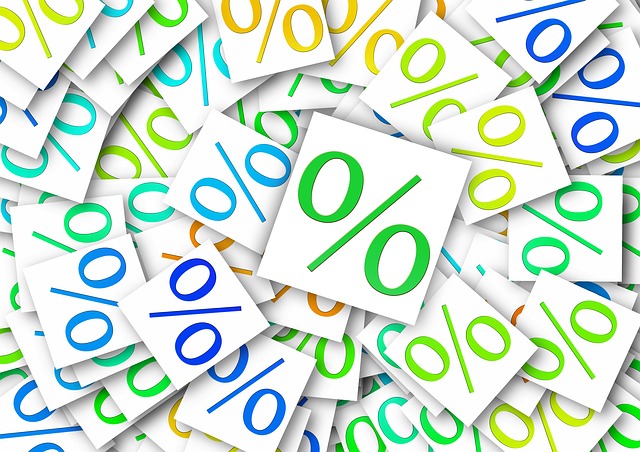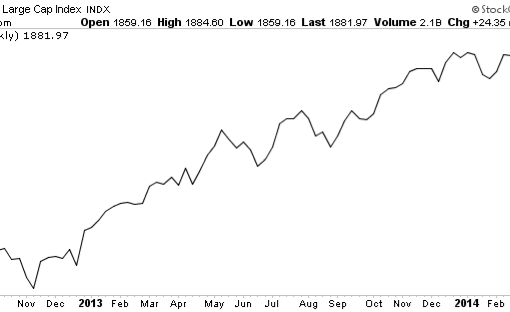Spring is a time of renewal—plants start to grow again and many of us start our cleaning, throwing out the old in favor of the new. Here at Chantico, we continually evaluate both our current strategies and new ideas aiming to maximize our clients’ risk-adjusted returns
As we were reviewing our performance this quarter, we realized that perhaps we were spending too much time looking for new approaches and not enough time focusing on what we already know.
We believe that our algorithm is designed to participate in the major moves of various asset classes, while limiting volatility. This almost necessitates underperformance over shorter time periods. Given that our investment orientation is more long-term in nature, this is not a concern.
We have no way of knowing for sure, but in our opinion, it is only a matter of time before interest rates begin to rise. In the United States, we seem to be in a period of low economic growth but, first quarter GDP aside, not a period of no growth.
This may keep interest rates capped for the time being. However, the more significant, sustained growth that we believe is yet to come, will lead to higher rates, at some point.
At the present time, there are considerable geopolitical events that seem to have little, if any, impact on the US financial markets. The current situation is well summarized by John Browne, a consultant to Euro Pacific Capital, and we share his thoughts here:
“When the former Soviet Union collapsed almost 25 years ago, most global strategic forecasters assumed that the U.S. would adapt pragmatically to her new status of sole world superpower. Instead she has pursued a variety of misguided nation-building adventures and has largely shrunk from her primary responsibility of neutralizing the ambitions of petty dictators around the world. From this perspective, America’s multi-generational expenditures on military personnel and equipment have become more of a stealth economic stimulus program rather than an insurance policy for global stability.
The massive failures of U.S. intervention in Vietnam, Iraq and Afghanistan have caused the Western Allies to fear the future deployment of troops. Instead they have resorted to preserving an impression of strength by pressing their agenda with minor nations like Serbia, Libya and Syria through a combination of endless diplomacy and relatively riskless air power. In doing so, they exposed not just a reduced military capability, but also far worse, a lack of will. This vital fact was not lost on America’s potential enemies.
Sensing this weakness, President Vladimir Putin of Russia, who is likely the continent’s most aggressive power player since the Second World War, felt free to redraw the map of Europe when political events in Ukraine did not go his way. On the economic front, the crisis has vividly illuminated the differing interests of the European Union (EU) and the U.S.
According to Eurostat, the EU imported 212 billion euros ($293 billion USD) worth of goods from Russia in 2012, while the U.S. imported a mere $29 billion. Furthermore, eight of the EU member nations are in trade surplus with Russia and the adverse trade balances of the remaining nineteen EU nations are relatively small. The difference in relative costs between the U.S. and these European nations that would arise from isolating Russia with major sanctions, let alone military action, are clear.
Thus far the Western response to his power grab has been underwhelming in the extreme. The minor financial sanctions placed on Russian oligarchs tied to Putin’s inner circle, and the few guided missile destroyers that have been deployed to the Black Sea will do little to change the trajectory of the Kremlin. It should then come as no surprise that Russian pressure on Ukraine did not stop with its fast motion annexation of Crimea, but has been steadily increasing in the last few weeks.
In early April, cities throughout eastern Ukraine experienced the occupation of government buildings and police stations by ‘unidentified’ protesters, whom many suspect are Russian special forces in plain clothes. By mid-April, speculation was rife that Ukraine might be headed for civil war, providing an excuse for Russian intervention to ‘keep the peace’ and, like Hitler in the late 1930’s, to protect his own countrymen living in a bordering nation.
In Iraq and Afghanistan, the U.S. and its NATO allies squandered large quantities of blood and treasure in fruitless experiments to alter the political and sociological realities of the Muslim world. However, in the Ukraine, which yearned for western-style democracy, the West offered merely money and rations. In doing so, they eroded drastically the age-old force multiplier of international prestige.
President Putin appears set on a clear strategy to re-colonize Russia’s old ’empire’ by means of so-called salami tactics in which he takes small slices of territory too minor to spark a conflict. But the slices ultimately pile high enough to provide a satisfying meal. If Putin’s victory in the Crimea is followed by success in the Ukraine, his next targets likely will be the so-called ‘Baltics’ of Estonia, Latvia and Lithuania.
All of which are NATO countries possessing the guarantee of mutual defense from other NATO members including the U.S., UK, Canada and Germany. The potential for Putin to prove false this myth of guaranteed defense could usher the world into a world of much higher uncertainty.
On the other side of the globe, China is building its military, exerting increasing influence and extending its territorial claims in the eastern Pacific. Worse still, China and Russia appear intent on destroying the U.S. dollar’s privileged role as the international Reserve currency. Any major loss of this role could threaten severe declines for the U.S. dollar and spikes in U.S. interest rates. In short, a loss of U.S. dollar’s Reserve status would create a sudden and massive strategic change in a world to which entire populations have grown accustomed since WWII.
Despite the considerable risks created by the situation in Eastern Europe, most western stock, bond and property markets, fed on massive central bank fiat liquidity, continue to flirt with new highs. This strikes me as an exercise in whistling past the graveyard. In the short term, investors may continue to profit from risk-taking in financial markets.
However, as recessionary forces mount, commodity prices can be expected to drop, even exerting some downward pressure on precious metals. In the longer term however, as realization that serious threats exist, including the possibility of armed conflict in continental Europe, precious metals once again may shine as a safe haven asset.
In the larger picture, much of the geopolitical balance of power that has been in place for much of the past 25 years will be tested on the banks of the Black Sea. Investors should take a few minutes from their daily technical chart analysis to consider these major developments.”
DISCLAIMER: The information in this material is not intended to be personalized financial advice and should not be solely relied on for making financial decisions. Past performance is no guarantee of future results.




